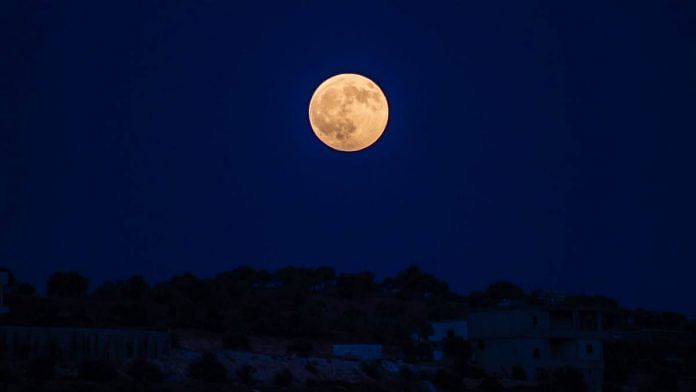Bangalore: It’s set to be a bright night tonight as the sky lights up with the last supermoon of the year.
A supermoon occurs when the moon appears larger and brighter owing to its closest approach to Earth. Tonight, the moon will be less than 3,60,000 km away from us, a small astronomical distance.
The close distance combined with the full moon will make the disc of the moon look 14 per cent larger and 12 per cent brighter.
The moon will reach its full phase officially at 7:13 am IST Thursday, four hours after the equinox. The exact equinox event will take place at 3.28 am IST Thursday. Also called the Vernal Equinox, this day marks the first day of the spring season.
Equinox is one of the two days of the year when day and night are approximately of equal length.
The last time the full moon and the spring equinox coincided this closely — approximately 4 hours apart — was in the March of 2000. The next time this happens will be 2030.
The last time they fell on the same date was on 20 March 1981.
Tonight’s full moon is often known as the worm moon in Native American folklore because it is around this time that earthworms start coming out from the soil as the snow starts to melt. In Canada, it is called the Full Sap Moon as it is during this time that sap of the sugar maple tree starts to flow. The names have all been traditionally used to mark the shifting of seasons.
This year has already seen two supermoons on January 21 and February 19, called Super Blood Wolf Moon and Super Snow Moon, respectively.
Also read: China’s moon landing may fuel humanity’s drive to other galaxies
What causes an equinox?
Owing to Earth’s tilted axis, the plane on which the Earth rotates and the one on which the sun is are not the same. An equinox is considered to occur when Earth’s equatorial plane passes directly through the centre of the sun. In other words, for someone on the earth’s equator, the sun is visible directly overhead.
During an equinox, the day and night are considered to be of equal duration. But due to various technical reasons, such as the refraction of light from the sun when it’s below the horizon or the latitude or more, the two lengths aren’t exactly equal.
The equinox is also the day on which the terminator line, which divides light and darkness on the planet, is directly perpendicular to the equator. As a consequence, it is only for two days of the year that the northern and southern hemispheres are illuminated equally. For the rest of the year, the hemisphere that is tilted towards the sun tends to have longer days with brighter illumination and the other side shorter and dimmer.
It is also directly related to the season: Spring begins on Spring Equinox, while autumn begins on the day of the Autumnal Equinox, on 23 September. June solstice and December solstice mark the start of the other two seasons.
Also read: First moon outside the solar system found. It’s the size of Neptune



